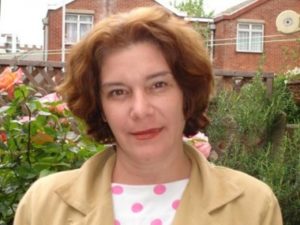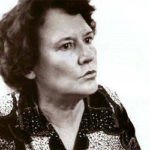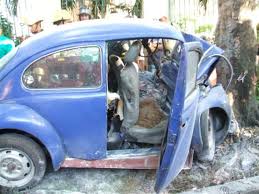 CELIA HART SANTAMARÍA, CUBAN PHYSICIST, IDEOLOGIST OF THE TROKISTA DOCTRINES IN CUBA.
CELIA HART SANTAMARÍA, CUBAN PHYSICIST, IDEOLOGIST OF THE TROKISTA DOCTRINES IN CUBA.
Celia Hart Santamaría was born on January 10, 1963 and was a Cuban physicist and ideologist of Trotskyist thought, in complete opposition to other theses opportunistically wielded by the Cuban Communist Party; even so for being the daughter of two historical leaders of the Cuban Revolution as Haydée Santamaría, who participated in the attack on the Moncada barracks and another important member, her father, Armando Hart Dávalos (recently deceased) the party nomenclature kept her as a member of the Party Cuban Communist until May 2006.
Celia Hart had been an outspoken defender of the political and revolutionary legacy of Leon Trotsky, a Soviet leader killed in Mexico on the orders of Stalin. His articles on this subject, which have been published by the Spanish Marxist website ‘El Militante’ and also in ‘Marxist.com’ provoked an intense debate on the Trotsky question, both in Cuba and internationally.
Since 2003, many of his writings were translated into English and published on CubaNews. Its editor, Walter Lippmann, is also editor of “It’s never too late to love or rebel” (Never too late to Love or Rebel), the collection in English of the writings of Celia Hart Santamaria. According to these books, she has described herself as a “freelance Trotskyist” since her discovery of Leon Trotsky and her writings, when she was studying in East Germany in the 1980s, according to the editors of the periodical publication ‘Socialist Resistance’. , “at that moment he could see first hand that this so-called” real socialism “was a society in decline and without a future”.
The mother of Celia, Haydée Santamaría always opposed the ‘Sovietization of Cuba’ – which is the attempt to impose rigid Stalinist bureaucracy and dogmatic thinking and methodology in Cuba. In Casa de las Américas there was no room for people like her and her thinking, either in her fight against dogmatism or the so-called socialist realism. He participated in the intellectual arena worldwide together with a true galaxy of talents such as Benedetti, Galich, Mariano Rodríguez and others. Apparently disillusioned Haydee Santamaría committed suicide on July 26, 1980 (Commemoration of the attack on the Moncada Barracks) in Havana.
In 1980, a month before her mother’s suicide, Celia decided to study physics at the University of Havana. Two years later she was sent to finish her studies at the University of Dresden, in the German Democratic Republic. Celia continued her studies until graduating in 1987 – the first foreign woman to graduate in this Faculty. He then returned to Havana, where he worked until a year later at the University, offering approximately 15 editorial works specialized in magnetism and superconductivity. She participated in about half a dozen congresses in Italy, Brazil and Argentina.
Celia Hart was also director in Cuba of the “Abel Santamaría Museum”, Abel, who was one of the assailants of the Moncada and considered a hero of the revolution.
Within the conception of his Trotskyist thought Celia Hart rejected the strange murder of Julio Antonio Mella in Mexico. He was one of the few people in Cuba who openly and publicly rejected the official version of the death of Julio Antonio Mella, murdered in Mexico. In an article published in ‘Rebellion’, he tells us: ‘I would not doubt that the Cuban Communist Party has explained to Vidali or Contreras how inopportune this young man was for the dark plans of the party.’
According to what was reported by three witnesses, then Vidali would have been present the night of Mella’s death. The three witnesses state that they saw three people, two men and a woman, advancing from Bucareli Street and arguing animatedly, and that one of the two men drew a gun and fired while the other ran forward. Vidali was never charged in these events. Tina Modotti was initially considered suspicious and later exonerated from charges. Marrying later with Vidali.
Of the Modotti, Celia Hart said: “… I do not forgive her that having the fine sensibility of an artist and having been loved by the most beautiful, intelligent and revolutionary man of her time, she would have linked herself to the dark Vidali. no Vidali is the one that is more current in current thought and more alive than ever, Vidali will remain frozen and always with a bad smell … “. Celia Hart Santamaría did not rule out that the crime was committed by the Stalinists of the then Cuban Communist Party, led at that time by Fabio Grobart and Blas Roca as heads.
Tragic Death.
Celia Hart attended the Trotskyist World Congress in 2004 and where she had intense conversations with her leading comrades. Soon after, he wrote: “I just came back after attending the International Conference of the Marxist tendency, it was a very important experience for me, I met some wonderful colleagues from Pakistan, Israel, Spain, United States … And I see that I am alone, that the same ideas that I defend are spreading all over the world, these are the ideas of the future, I thank all my colleagues for the happiest summer of my life. ”
“From that moment,” continues Celia, “everything began to fit like pieces of a puzzle.” None of Celia’s works were published in Cuba.
On September 7, 2008, Celia Hart Santamaría, 45 years old and her brother Abel, 48, died in a strange and sinister traffic accident in Havana. They were two people considered by the Cuban regime then “very conflictive” people with the thoughts of the Cuban Communist Party.
 CELIA HART SANTAMARÍA, FÍSICA, IDEÓLOGA CUBANA DE LAS DOCTRINAS TROTSKISTAS.
CELIA HART SANTAMARÍA, FÍSICA, IDEÓLOGA CUBANA DE LAS DOCTRINAS TROTSKISTAS.
Celia Hart Santamaría nació un 10 de Enero de 1963 y fue una física e ideóloga cubana del pensamiento Trotskista, en completa oposición a otras tesis esgrimidas oportunisticamente por el Partido Comunista Cubano; aun así por ser hija de dos dirigentes históricos de la Revolución Cubana como Haydée Santamaría, que participó en el ataque al cuartel Moncada y de otro miembro importante, su padre, Armando Hart Dávalos (recientemente fallecido) la nomenclatura partidista la mantuvo como miembro del Partido Comunista Cubano hasta Mayo del 2006.
Celia Hart había sido una abierta defensora de la herencia política y revolucionaria de León Trotsky, dirigente soviético asesinado en México Por órdenes de Stalin. Sus artículos sobre este tema, que han sido publicadas por el sitio web español marxista ‘El Militante’ y también en ‘Marxist.com’ provocaron un intenso debate sobre la cuestión de Trotsky, tanto en Cuba como en el plano internacional.
Desde 2003, muchos de sus escritos fueron traducidos al inglés y publicados en CubaNews. Su editor, Walter Lippmann, es también editor de “It’s never too late to love or rebel” (Nunca es demasiado tarde para Amar o Rebelarse), la colección en idioma inglés de los escritos de Celia Hart Santamaria. Según esos libros, se ha descrito a sí misma como “trotskista freelance’ desde su descubrimiento de León Trotsky y sus escritos, cuando estaba estudiando en la Alemania del Este en los 80s. De acuerdo a los editores de la publicación periódica ‘Socialist Resistance’, “en ese momento pudo ver de primera mano que ese llamado “socialismo real” era una sociedad en decadencia y sin futuro”.
La madre de Celia, Haydée Santamaría siempre se opuso a la ‘sovietización de Cuba’ – que es el intento de imponer la burocracia estalinista rígida y el pensamiento dogmático y metodología en Cuba. En Casa de las Américas no había espacio para personas como ella y su pensamiento, ya sea en su lucha contra el dogmatismo o el llamado realismo socialista. Participó en arena intelectual mundialmente junto una verdadera galaxia de talentos como Benedetti, Galich, Mariano Rodríguez y otros. Aparentemente desilusionada Haydee Santamaría se suicidó un 26 de Julio de 1980 (Conmemoración del ataque al Cuartel Moncada) en la Habana.
En 1980, un mes antes del suicidio de su madre, Celia decidió estudiar física en la Universidad de La Habana. Dos años más tarde fue enviada a terminar sus estudios en la Universidad de Dresde, en la República Democrática Alemana. Celia continuó sus estudios hasta graduarse en 1987 – la primera mujer extranjera para graduarse en esta Facultad. A continuación, regresó a La Habana, donde trabajó hasta un año después en la Universidad ofreciendo ya aproximadamente 15 obras editoriales especialista en magnetismo y la superconductividad. Ella participó en cerca de media docena de congresos en Italia, Brasil y Argentina.
Celia Hart fue también directora en Cuba del “Museo Abel Santamaría”, Abel, quien fuera uno de los asaltantes del Moncada y considerado un héroe de la revolución.
Dentro de la concepción de su pensamiento Trotskista Celia Hart rechazó el extraño asesinato de Julio Antonio Mella en México. Fue una de las pocas personas en Cuba que abierta y públicamente rechazó la versión oficial de la muerte de Julio Antonio Mella, asesinado en México. En un artículo publicado en ‘Rebelión’, nos dice: ‘no dudaría que el Partido Comunista Cubano le haya explicado a Vidali o Contreras lo inoportuno que era este joven para los tenebrosos planes del partido”.
De acuerdo a lo relatado por tres testigos, entonces Vidali habría estado presente la noche de la muerte de Mella. Los tres testigos afirman que vieron a tres personas, dos hombres y una mujer, avanzando desde la calle Bucareli y discutiendo animadamente, y que uno de los dos hombres sacó una pistola y disparó mientras el otro corría hacia delante. Vidali nunca fue acusado en estos hechos. Tina Modotti fue considerada inicialmente sospechosa y más tarde exonerada de cargos. Casandose mas tarde con Vidali.
De la Modotti, Celia Hart dijo: “…no le perdono que teniendo la fina sensibilidad de una artista y habiendo sido amada por el hombre más bello, inteligente y revolucionario de su tiempo, se hubiese ligado al oscuro Vidali. Pero Mella y no Vidali es el que está mas actual en el pensamiento actual y más vivo que nunca. Vidali permanecerá helado y siempre con mal olor…”. Celia Hart Santamaría no descartó que el crimen fue realizado por los estalinistas del Partido Comunista Cubano de entonces, dirigidos en aquellos momentos por Fabio Grobart y Blas Roca como cabezas.
Trágica Muerte.
Celia Hart asistido al Congreso Mundial trotskista en 2004 y donde tenía intensas conversaciones con sus camaradas dirigentes. Poco después, escribió: “Acabo de regresar después de asistir a la Conferencia Internacional de la tendencia marxista. Fue una experiencia muy importante para mí. Conocí a algunos compañeros maravillosos de Pakistán, Israel, España, Estados Unidos … Y veo que no estoy sola , que las mismas ideas que defiendo se están extendiendo por todo el mundo. Estas son las ideas del futuro. agradezco a todos los compañeros por el verano más feliz de mi vida”.
“A partir de ese momento”, continúa Celia, “todo empezó a encajar como las piezas de un rompecabezas”. Ninguna de las obras de Celia fueron publicados en Cuba.
El 7 de septiembre de 2008, Celia Hart Santamaría, de 45 años de edad y su hermano Abel de 48 encontraron la muerte en un extraño y siniestro accidente de tráfico en La Habana. Eran ellos dos personas consideradas por el régimen cubano entonces personas “muy conflictivas” con los pensamientos del Partido Comunista Cubano.
Agencies/Various/Wiki/Internet Photos/Arnoldo Varona/ Thecubanhistory.com
THE CUBAN HISTORY, HOLLYWOOD.












